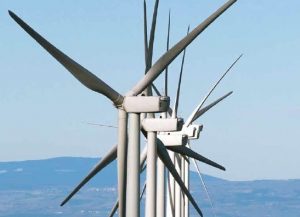Offshore wind in Europe has now reached a capacity of 6,040 MW, from 58 wind farms in the waters off ten countries. 1,045 of those MW were installed in the first six months of 2013 alone, when 277 new turbines came online. Across the Atlantic, offshore wind projects are still in their infancy, but a new horizon for wind energy is starting to open up. With construction on the much-debated Cape Wind project expected to begin later this year, and new offshore leases currently being awarded along the Atlantic coast, the opportunities for offshore wind in the U.S. have never been greater.
But is the technological know-how up to speed? Turbine size, foundation type and maintenance strategies are all crucial considerations for any project developer. Then there is the complexity of getting these projects online: convincing investors; negotiating permitting and logistics; training and recruiting staff; connecting to the grid. Here, the mature markets of Europe have much to offer in terms of best practice, shared experiences, and technical expertise.
When Europeans wanted to know about computers in the 1990s, they didn’t stay in Europe; they went to Silicon Valley in California. Now the reverse is true for wind energy: while the U.S. wind industry already has several decades of onshore expertise, it’s their European neighbors who have the experience in offshore. And the European offshore wind industry will be gathering this November at EWEA OFFSHORE 2013—the world’s largest offshore wind energy conference and exhibition—to share its knowledge, display its products, and do business. The event, held every two years, is a showcase for companies and a learning opportunity for thousands of professionals. The 2011 edition attracted more than 480 exhibitors and over 8,200 participants, and exhibition space for this year’s event in Frankfurt, Germany in November is almost sold out.
But things in the offshore wind sector have changed since 2011, and the focus and location of the 2013 event have been chosen to reflect this. Given the massive requirements for investment in developing offshore wind, and the current economic crisis, finance is a major concern for the offshore wind industry—in the first half of 2013, despite strong growth in offshore installations, just one European project reached financial close. The conference’s Financing Track will center on a major issue for investors: Risk—overcoming transmission risk; de-risking projects; and how new financing instruments can lower the cost of capital.
While wind energy in the U.S. has been given another breath of life thanks to the extended PTC, much investor uncertainty in Europe stems from the current lack of a stable EU regulatory framework for renewable energy beyond 2020. At the forefront of the political debate is the question of binding EU climate and energy targets for 2030, and in this context, EWEA’s OFFSHORE 2013 event will open with a high-level plenary session featuring European politicians debating their positions on 2030 targets, which has far-reaching implications for the entire wind industry.
Another important question for investors is the relatively high cost of offshore wind, and the maturity of an industry that has grown so quickly. Throughout the conference program, sessions have been designed to show how the sector is addressing the twin issues of reducing the cost of energy and moving towards full industrialization. The conference tracks ‘Markets, Strategies and Planning’, ‘Future Technologies,’ and ‘Industrializing the Supply Chain’ hold a wealth of information from people working in the offshore wind energy sector.
The opportunities for exchanges between the participants from different countries and regions will be key for many attendees. In 2011 in Amsterdam, 62 countries were represented among the participants, making it a truly international event. With companies exhibiting and presenting from the U.S., Asia and all across Europe, the 2013 event will certainly follow suit.
At an event with such a diverse mix of participants and activities, occasions for making new contacts are everywhere—including specific networking events such as the lively opening reception and the glamorous conference dinner. Of the previous EWEA OFFSHORE event, Jean Huby, CEO, Areva Wind said “If we want to succeed in offshore wind we need to build strategic partnerships. We need to know the people, we need to network with them and here we have the whole industry present.”

























